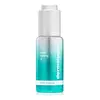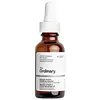What's inside
What's inside
 Key Ingredients
Key Ingredients

 Benefits
Benefits

 Concerns
Concerns

 Ingredients Side-by-side
Ingredients Side-by-side

Coconut Alkanes
EmollientPPG-15 Stearyl Ether
EmollientRosa Canina Fruit Oil
EmollientSimmondsia Chinensis Seed Oil
EmollientC13-15 Alkane
SolventCoco-Caprylate/Caprate
EmollientArgania Spinosa Kernel Oil
EmollientSalicylic Acid
MaskingCaprylic/Capric Triglyceride
MaskingIsopropyl Lauroyl Sarcosinate
Skin ConditioningRetinyl Propionate
Skin ConditioningButyl Avocadate
Skin ConditioningPhenylethyl Resorcinol
AntioxidantTanacetum Annuum Flower Oil
MaskingSclareolide
MaskingTriolein
Skin ConditioningCetyl Alcohol
EmollientHydroxymethoxyphenyl Decanone
Skin ConditioningTocopherol
AntioxidantBHT
AntioxidantPropyl Gallate
AntioxidantCoconut Alkanes, PPG-15 Stearyl Ether, Rosa Canina Fruit Oil, Simmondsia Chinensis Seed Oil, C13-15 Alkane, Coco-Caprylate/Caprate, Argania Spinosa Kernel Oil, Salicylic Acid, Caprylic/Capric Triglyceride, Isopropyl Lauroyl Sarcosinate, Retinyl Propionate, Butyl Avocadate, Phenylethyl Resorcinol, Tanacetum Annuum Flower Oil, Sclareolide, Triolein, Cetyl Alcohol, Hydroxymethoxyphenyl Decanone, Tocopherol, BHT, Propyl Gallate
 Reviews
Reviews

Alternatives
Ingredients Explained
These ingredients are found in both products.
Ingredients higher up in an ingredient list are typically present in a larger amount.
This ingredient is an emollient, solvent, and texture enhancer. It is considered a skin-softener by helping the skin prevent moisture loss.
It helps thicken a product's formula and makes it easier to spread by dissolving clumping compounds.
Caprylic Triglyceride is made by combining glycerin with coconut oil, forming a clear liquid.
While there is an assumption Caprylic Triglyceride can clog pores due to it being derived from coconut oil, there is no research supporting this.
Learn more about Caprylic/Capric TriglycerideHydroxymethoxyphenyl Decanone is a synthetically created molecule made to mimic ginger extract.
Ginger has anti-inflammatory properties and helps to soothe skin.
According to one study, it is an HA booster, antioxidant, and anti-irritant.
In this study, this ingredient was able to stimulate higher hyaluronic acid levels of the dermal and epidermal layers on a skin-like model. Hyaluronic Acid is a humectant, which means it helps attract moisture to your skin. Humectants help keep skin hydrated.
As an antioxidant, Hydroxymethoxyphenyl Decanone is able to fight off damage from free-radical molecules.
Learn more about Hydroxymethoxyphenyl DecanoneSalicylic Acid (also known as beta hydroxy acid or BHA) is a well-known ingredient for treating skin that struggles with acne and clogged pores. It exfoliates both the skin's surface and deep within the pores to help clear out buildup, control oil, and reduce inflammation.
Unlike AHAs (alpha hydroxy acids), salicylic acid is oil-soluble. This allows it to penetrate into pores which makes it especially effective for treating blackheads and preventing future breakouts.
Salicylic acid is also known for its soothing properties. It has a similar structure to aspirin and can calm inflamed or irritated skin, making it a good option for acne-prone skin that is also sensitive.
Concentrations of 0.5-2% are recognized by the U.S. FDA as an over-the-counter topical acne product.
It can cause irritation and/or dryness if one's skin already has a compromised moisture barrier, so it's best to focus on repairing that before introducing this ingredient into your routine.
While salicylic acid does not increase sun sensitivity, it’s still important to wear sunscreen daily to protect your skin.
If you are looking for the ingredient called BHA or Butylated Hydroxyanisole, click here.
Learn more about Salicylic Acid